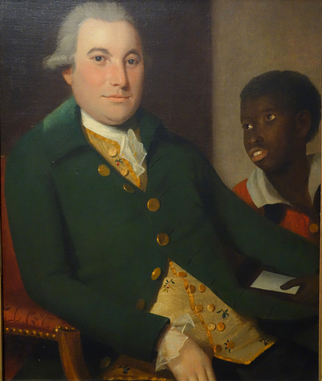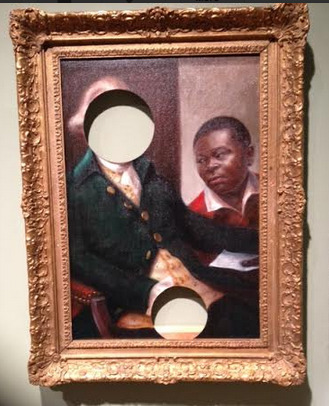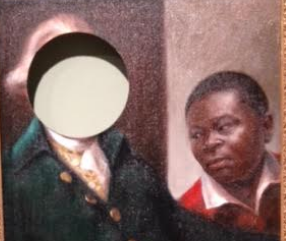Jaavon and the Unknown Gentleman, 2011. Titus Kaphar.
Gentleman with Negro Attendant, 1785-88. Ralph EarlJaavon and the Unknown Gentleman was commissioned by the New Britain Museum of American Art as a contemporary commentary on the Colonial-era work Gentleman with Negro Attendant, by Ralph Earl. The resulting painting is the first in a new series that focuses on identity. Kaphar explains:
“Much of black history recorded in Western art is summarized visually by three roles: enslaved, in servitude, or impoverished. But beyond this limited social order lies a people of dignity and strength, whose survival is nothing less than miraculous. Within the context of 19th century paintings, most black characters play, at best, secondary roles int he composition. The implication of hierarchy through compositional positioning (that is, figures in the composition) is a fundamental theme explored in this piece.
In many paintings from this period the prototypical image of a black person was as a slave or servant, just outside of illuminated areas of importance. The characters in the shadows were there to add balance to the overall composition and emphasize, or accentuate, the statue of the “important” character being painted.
In the original painting Gentleman with Negro the black child is stripped of all identity. He has no name, grotesquely articulated features, and is bereft of human dignity. In Jaavon and the Unknown Gentleman, the black figure is replaced with a living and particular child — my young neighbor.”


